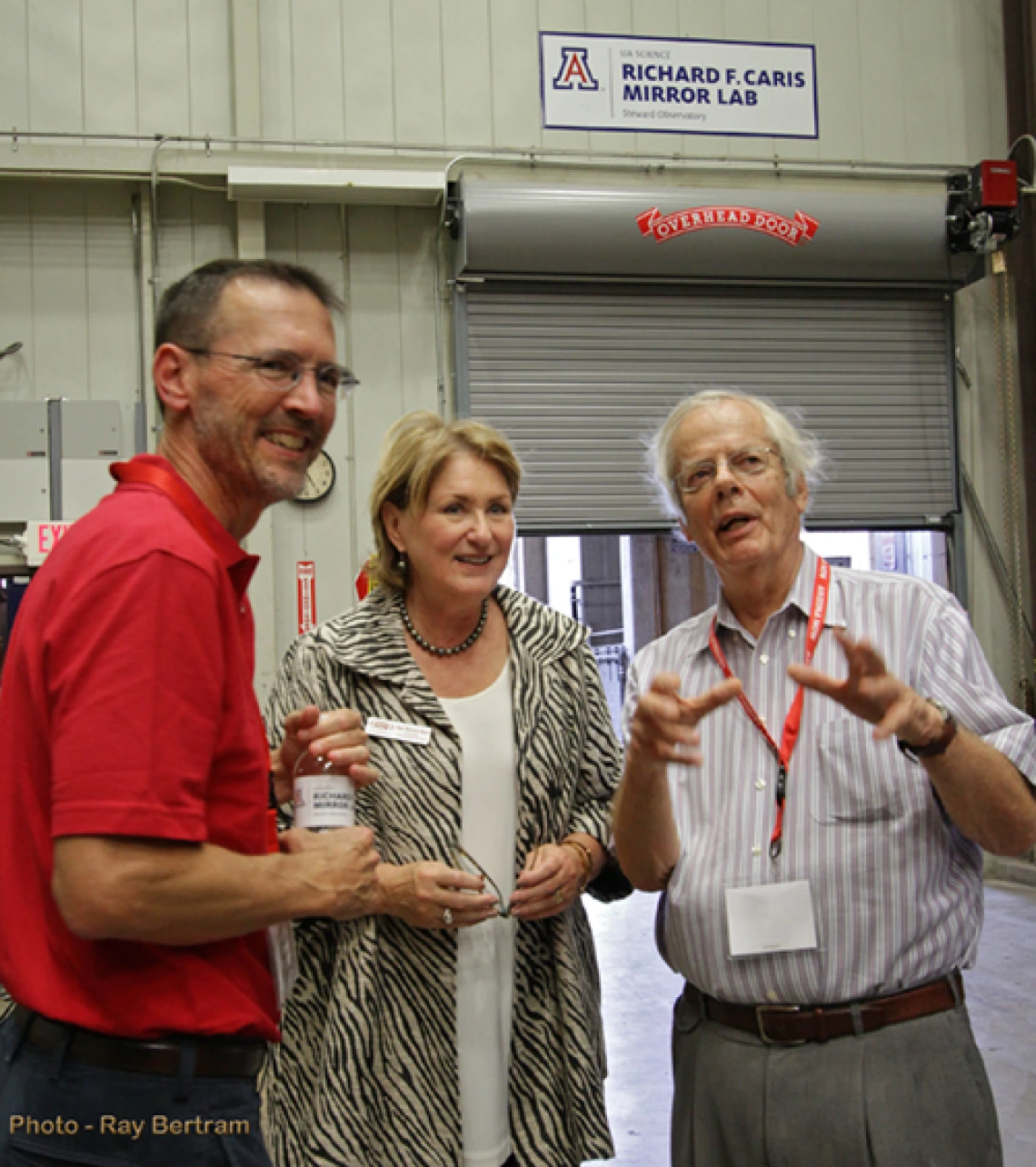UA Professor Roger Angel Inducted into National Inventors Hall of Fame

TUCSON, Ariz. — Regents' Professor Roger Angel of the Colleges of Science and Optical Sciences at the University of Arizona, whose pioneering work has helped to expand the horizons of astronomy and optics is one of 16 inductees this year into the National Inventors Hall of Fame(link is external).
Angel and the other inductees will be honored at a ceremony on May 5, 2016, at the Smithsonian American Art Museum and the National Portrait Gallery in Washington, D.C.
Over the course of a career spanning almost half a century, Angel has developed concepts for imaging and searching for Earth-like planets orbiting nearby stars, explored innovative ways to cool our warming planet and invented revolutionary methods for manufacturing large-scale optics for telescopes.
"Roger’s ability to think deeply about apparently simple physical principles and find innovative, tractable solutions to problems that previously seemed impossible to solve is emblematic of our greatest inventors," said Buell Jannuzi, head of the Department of Astronomy and director of the Steward Observatory at the UA.
Angel is best known for inventing ways to make extremely large, parabolic glass mirrors with a lightweight, strong honeycomb structure. Historically, large mirrors for telescopes were cast as heavy, solid structures. But what began as an experiment in Angel’s back yard to fuse together two glass custard cups in a homemade kiln led to a revolution in manufacturing these huge mirrors.
Angel’s basic methodology has grown into what is today the core operation at the Richard F. Caris Mirror Lab at the Steward Observatory, which has a large rotating furnace capable of spin-casting parabolic mirrors of up to 8.4 meters in diameter – the largest optics of their kind in the world.
In astronomy, larger mirrors equate to telescopes that have the ability to collect more light and see farther out into space and deeper into the history of our universe. They also enable higher resolution imaging, enabling astronomers for the first time to discern planets orbiting nearby stars.
Two such mirrors are used in the Large Binocular Telescope(link is external) located on Mount Graham in Arizona, and seven will be configured to form a single huge dish reflector for the Giant Magellan Telescope(link is external) in Chile. With each mirror taking approximately a year to create, the GMT is scheduled for commission in 2021.
The GMT telescope will have a resolving power 10 times greater than the Hubble Space Telescope by using very thin, flexible secondary mirrors to correct images for atmospheric blurring — another invention by Angel, made with Italian colleague Piero Salinari.
"There’s a bunch of stuff that we didn’t patent but probably should have," Angel said, such as ways to polish and test mirrors developed with UA colleagues Buddy Martin and Jim Burge. Early on with the UA’s John Hill, a student at the time, Angel invented a way to use fiber optics in astronomy to obtain spectra of many galaxies at once. This method is widely used across the field today.
Most recently, Angel worked with Tech Launch Arizona – the office of the UA that works with faculty and researchers to protect and commercialize inventions stemming from academic investigation – to patent a system he developed for solar energy generation. REhnu(link is external), a startup company Angel co-founded with UA Regents’ Professor Peter Strittmatter has exclusively licensed the solar technology from the UA to bring it to market.
"Roger not only has the capacity to make remarkable inventions, but also the courage and perseverance to push major undertakings forward to a successful conclusion even when conventional wisdom claims that they are impossible," Strittmatter said of Angel’s tenacity as an inventor.
Thomas L. Koch, dean of the UA College of Optical Sciences, said of Angel: "Roger has been an intellectual leader and an amazing fountain of creativity for the optics and astronomy communities. It's wonderful to see this strong recognition of his impact."
Kimberly Andrews Espy, the UA's senior vice president for research, said: "Roger's innovative work in solar energy builds upon his fundamental research in how to manipulate light. His efforts go end-to-end, from basic discovery to an innovative technology that harnesses the energy from the sun. His discoveries have all been for the betterment of society, a hallmark of research at the University of Arizona. This award is well deserved, and recognizes Roger's boundless creativity and dedication."
Angel has 12 patents to date, with his inventions focusing primarily on technologies related to solar reflectors and concentrators. He has been highly regarded throughout his career, with past honors including the Kavli Prize in Astrophysics (2010); a MacArthur Fellowship (1996-2001); and an Alfred P. Sloan Research Fellowship (1970-1974). He is a Royal Society fellow and a member of the National Academy of Sciences.
Founded in 1973, the NIHF, located in Alexandria, Virginia, houses an interactive gallery of more than 500 inventor inductees and their technological achievements.

